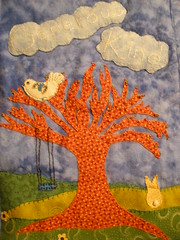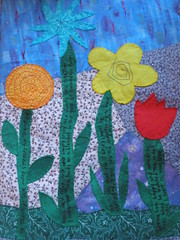The recipes in Eat Your Way Through the U.S.A. which is part of the curriculum had a couple of recipes of Rhode Island (Rhode Island Red Clam Chowder and Mocha Cake). However, neither appealed to us, so I chose to look on the internet for recipes from Rhode Island.
There were two that I found that I thought would be interesting to try: Spicy Apple Twists and Spicy Tuna and Avocado Ceviche. All of us liked the apple twists. Sophia and I liked the ceviche, but Olivia didn't care for it.
Spicy Apple Twists.
Spicy Apple Twists
(Rhode Island Fruit Growers)
Ingredients
2 large apples, pared and cored
1 1/2 cups flour
1/2 cup sugar
3/4 cup water
1 teaspoon salt
1/2 cup shortening
4-5 tablespoons water
1/3 cup melted butter (we used dairy-free butter)
1-1 1/2 teaspoons cinnamon
Directions
Slice each apple into 8 wedges. Mix flour with salt into mixing bowl. Cut in shortening. Sprinkle cold water over mixture stirring with fork until dough is just moist enough to hold together. Form into ball, then flatten to about 1/2 inch thickness. Roll out on a floured surface to 16x10 inch rectangle. Cut into 16 10x1 inch strips.
Wrap one strip around each apple wedge. Arrange in 13x9x2 inch pan. Brush with butter; sprinkle with mixture of cinnamon and sugar.
Sophia sprinkling cinnamon and sugar
on top of the twists.
Olivia is brushing melted butter on her twists.
Pour 3/4 cup water around pastries. Bake in 450 degree oven 25-30 minutes until golden brown. Serve warm or cold, plain or with whipped cream.
*~*~*~*~*~*~*~*~*
Point Judith, Rhode Island, is the Tuna Capital of the World. So, we made something with tuna. Since tuna isn't freshly-caught in Minnesota, we opted to use canned white tuna. It's not the same thing as the recipe calls for, but it's what we had on hand.
A modified version of
Spicy Avacado and Tuna Ceviche.
Spicy Tuna and Avocado Ceviche
(Recipe Source)
Ingredients
Juice of 1/2 lime
1 teaspoon sambal oelek (we didn't use this)
1 teaspoon reduced-sodium soy sauce
1/4 teaspoon kosher salt
1 large red or green scallion (we used a green scallion), minced
1 avocado, diced
1/2 lb chilled sushi-grade tuna, diced
2 tsp chopped fresh cilantro leaves
Directions
In a mixing bowl, combine lime juice, sambal, soy sauce and salt. Add remaining ingredients, and toss to coat. The lime juice will begin to "cook" the fish, so make this at the last minute. Serve immediately, while still cold, with crackers, toasted bread slices, or in lettuce leaves. Serves 6-8 as an appetizer.
As a side note, ceviche - pronounced seh VEE chay- is a Latin appetizer of raw fish "cooked" in an acid like lime or lemon.
























































